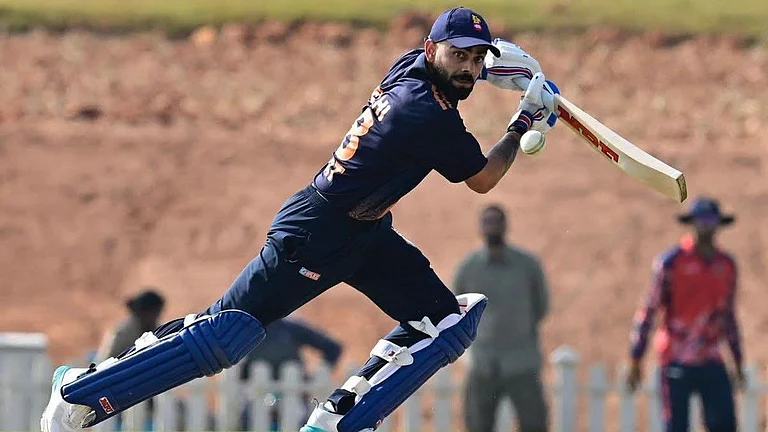As we brave the firestorm of the COVID-19 second wave, the single, clear, overall impression is that the government’s efforts to tackle this unprecedented crisis have all but collapsed. Individuals are on their own, assisted by a heroic but over-strapped healthcare system rising to the challenge, backed by civil society efforts. The problems are too numerous and grim to be enumerated, ranging from shortage of oxygen, to beds, vaccines and medication.
Yet, when the layers of government are peeled away, below the overall failure, a chequered picture emerges. Some states are doing better than others in all aspects of facing the devastation. Local governments such as municipalities and panchayats are also performing better, though their efforts are not celebrated enough as they happen far from the media’s eye. The Union government’s failures are all out there for us to see, regardless of the efforts to remove social media posts that are termed ‘inflammatory’.
ALSO READ: The Missing Link Public Health
Though it may seem irrelevant, even cruel, to think about institutional reforms when we are in the throes of this disaster, we must. Only a proper institutional design will ensure that, regardless of the political situation, we are equipped better to tackle future similar disasters. For, there is no doubt that this wave will be followed by more.
Looking at a parallel example, India has done well in its institutional design for tackling natural disasters other than pandemics. Through the Disaster Management Act 2005, the Union government set up multi-disciplinary Disaster Management authorities from the national to the state, district and local levels. These authorities were assigned clear functions and responsibilities. A separate fiscal window was carved out to deal with natural disasters. The purpose of such a design was to create a rapid response structure free of the bureaucratisation of complex government departments, secretariats and treasuries. The success of this approach has been seen in the way India has since handled natural disasters such as floods, cyclones and earthquakes. True, the Disaster Management system benefited from the experience of some states such as Odisha, Andhra Pradesh and Gujarat in handling cataclysmic natural disasters, but even so, we can be proud that we have a system that can handle natural disasters reasonably well.
That success makes the contrast with the collapse of our Covid response all the more stark. Could we design a system that derives the same effectiveness for pandemics, even if the current crisis may not benefit from it? Can we learn something from the desperate straits in which we find ourselves?
There are some useful generic rules to follow when designing layered government systems. First, functions ought to be carefully allocated to different levels as exclusively as possible. Some concurrency of action is inevitable, but too much of overlap between the functions of different levels can create confusion and dilute accountability. Second, finance must follow function. No mandates must be given to institutions without giving them recourse to adequate resources for execution; if unfunded mandates exist, sooner than later, they will not be carried out. Third, every institution that is given a mandate must be given command and control over the staff and other capacities required to deliver that mandate effectively.

While these simple rules are easy to state out, they are difficult to execute in practice. Nobody wants to give away powers of command and control, powers to move around large sums of money and powers to dispense patronage and grant favours. This is the reason why functional assignments to local governments in India have not worked well in practice; there is little motivation to truly devolve functions, finances and functionaries to local levels. However, there is no reason to think these rules may not work for pandemic response, given that everybody ought to be suitably chastened by the disaster we face currently.
ALSO READ: We, The Makers Of This Calvary
Our crisis naturally suggests that we establish a high-powered Pandemic Response Authority at the national level and mimic the structure of the Disaster Management System. However, one must be cautious about such an approach. Newly-set-up institutions take time to stabilise and establish their infrastructure and systems. Other institutions will not like to transfer their responsibilities to a new institution, in spite of the fact that they have not been able to perform these effectively. Furthermore, new institutional structures depend on the credibility and strength of the first team of leaders; the Disaster Management system was lucky to have good bureaucrats at the very start, who institutionalised efficient practices which were useful as future events proved. I therefore suggest that a Pandemic Response Unit is best established within the already existing Disaster Management Authority. This will save valuable time and enable the new Unit to use the well-established system of the DMA to ground itself.
Even if a new Pandemic Response Unit is established by resisting turf battles and carving out an exclusive space for itself, there is always the danger of over-centralisation. This has been the bane of Indian governance in nearly every sphere. The Union government runs several ministries that operate entirely in the functional sphere of the states. The latter, in turn, only nominally implement decentralization themselves, using local governments merely as agents to deliver top-down programmes, with little discretion given to them. When such an ethos rules government thinking, it is quite possible that a Pandemic Response Unit becomes a super-ministry, exercising unnecessary discretion and hampering effective response rather than aiding it.
ALSO READ: Beating The Virus A Survival Guide
Ideally, what can be done at a lower level ought not to move upward. This includes the organisation of vaccination, production and concentration of oxygen, adding hospital beds and their allocation, issuing directives to commandeer private hospital facilities in emergencies and compliance with rules of responsible citizen behaviour. Only those residual matters that cannot be handled at a state or local government level needs to be handled by an apex unit. To determine what is best done at the top, some design rules are useful. Matters that have wide repercussions across jurisdictions are best centralised. So also are matters that enjoy scales of economy. Matters that involve wide discretion, multiple transactions and demand public accountability are best decentralised. Not everything can be teased out to fit into these clear slots, but these ground rules can create a harmoniously interconnected system that works.
However, if the imperative is to centralise and distribute essential supplies as largesse or centrally control staff, the matter can quickly go out of hand. Take oxygen shortage. The production of oxygen does not benefit too greatly from economies of scale. Production closer to the points of consumption is seen to be beneficial, if the examples of Kerala and Orissa are considered. This is a matter that could easily have been left to the states, without the Union government interfering in distribution of oxygen, and making a mess of it. If the thinking around such matters is that everything must be centralised, then having a separate Pandemic Response Authority would not make any difference. Similarly, the mess in Delhi is also a result of the Union government’s strangulation of an elected government of the Union Territory answerable to its people. It is insane governance to not give the state government of Delhi powers of command and control over its staff in matters such as health, which are entirely within its functional domain, as held by the Supreme Court.
ALSO READ: Smother The Third wave
On the other hand, the organisation of the funds required, the assured buy-back arrangements and the settlement of pricing for vaccination is something that lends itself well to centralisation, given the wide area repercussions of the availability of vaccine, and the economies of scale. This is exactly the kind of problem that a Pandemic Response Unit would be able to handle well.
Four important matters in which a Pandemic Response Unit would add value would be in strategic medium-term and long-term planning, promoting research, international cooperation and capacity-building. Planning for pandemics would be a different cup of tea from planning for disasters, considering that in the former, the threat is unseen, it is continuous and constantly evolving. Promoting genuine research into genome sequencing ought to take centrestage. Sharing the body of knowledge gathered in India with the international community without any reservation is critical for the future of humanity. Last but not the least, a continuous programme of capacity development for all levels of management right down to the last frontline worker is critical for the success of future pandemic control efforts.
The situation is grim today, no doubt. Political accountability has to be fixed, and one hopes it will happen. However, beyond that, we need to get the management response right. We, as a people, need to flag that as a priority and demand that systems that can work are set up, and they work right. If that is not done, regardless of the political repercussions of this gigantic governance failure that we see, we will continue to suffer far into the future.
(The author is an ex-joint secretary in the Panchayati Raj ministry. He is associated with the Centre for Policy Research and several networks that advocate decentralisation as a governance model. He is the author of Everything You Ever Wanted To Know About Bureaucracy But Were Afraid To Ask. Views are personal.)





















